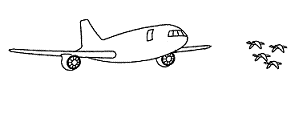Bird Strike Committee Proceedings

Bird Strike Committee-USA/Canada Joint Annual Meeting: 2nd (2000)
Date of this Version
August 2000
Document Type
Article
Abstract
Radars have commonly been used for bird detection since the late 1940s. More sophisticated methodologies have been developed over the past 15 years in an effort to provide advisories to pilots flying high-speed, low-level operations. More recently, radars have been used to identify and track bird movements around airports and bombing ranges to develop risk models for bird avoidance. We investigated various radar systems for detecting potentially hazardous bird movements on and in the vicinity of New Orleans International Airport. The systems were used to determine their potential in providing information for development of management strategies, active bird control efforts, community planning, and in-flight advisories. Systems evaluated include: Terminal Doppler Weather Radar, Airport Surveillance Radar, NEXRAD, mobile S-band, and tactical personnel radar. The Terminal Doppler Weather Radar (TDWR) is a 5 cm wavelength (C-band) pulsed Doppler radar that was developed as part of the Integrated Terminal Weather System (ITWS). The main purpose of this system is to identify gust fronts and weather conditions likely to generate wind shear. TDWR systems are located at selected commercial airports that have had a history of turbulent weather. TDWR radar monitors are located in the tower cab and often show large bird movements around the airport. The Airport Surveillance Radars (ASR) are used by air traffic controllers for monitoring approaching and departing aircraft. The ASR-9 is a 10 cm (S-band), fan-beam radar commonly found on commercial airports. These units may also depict bird movements in the vicinity of the airport when the gain is set high. The Next Generation Weather Radar (WSR 88-D) was jointly developed by the FAA, the National Weather Service, and the Department of Defense to provide nationwide weather information. NEXRAD is a 10 cm pulsed Doppler radar that has an effective bird detection range of approximately 64 nautical miles. The uses and limitations of these systems for bird detection on commercial airports will be examined. Additionally the use of specialized bird detection radar and mobile radar systems will be discussed.

